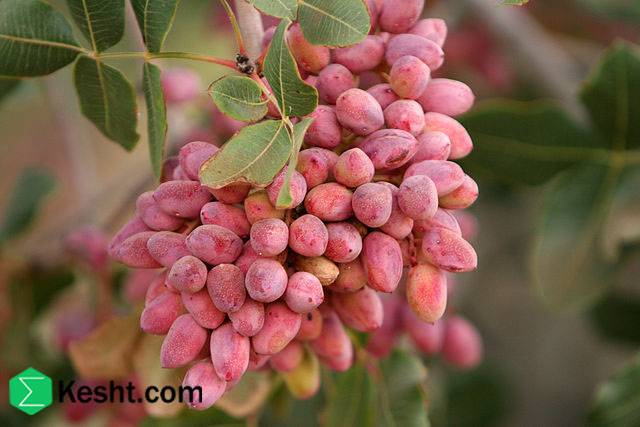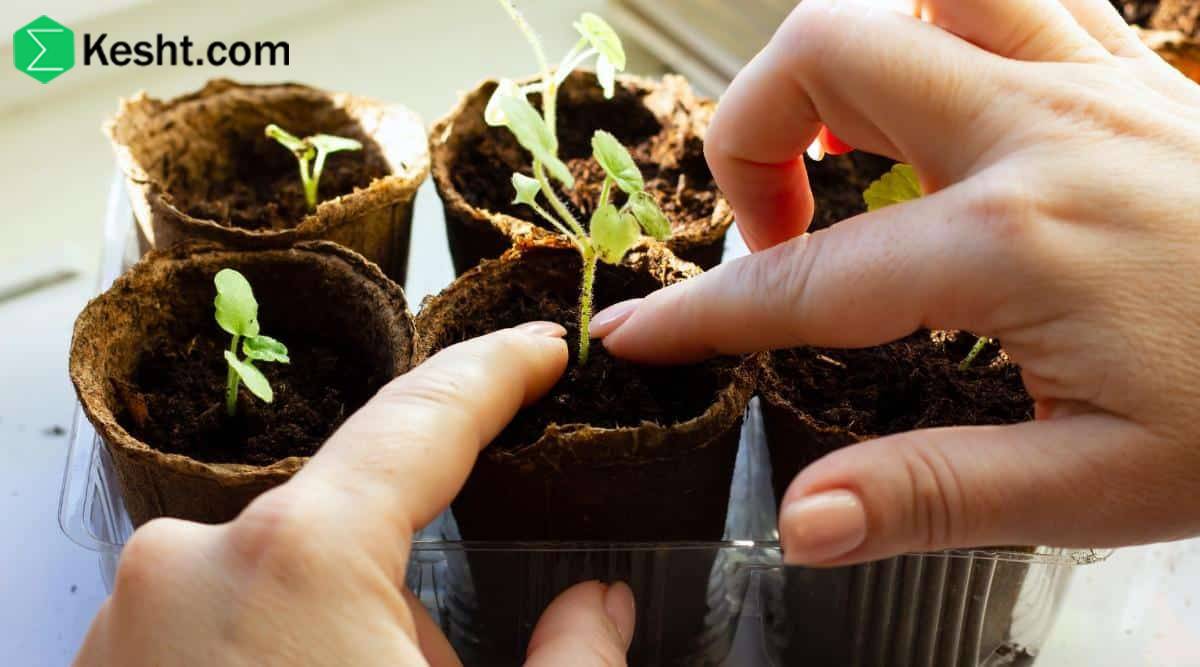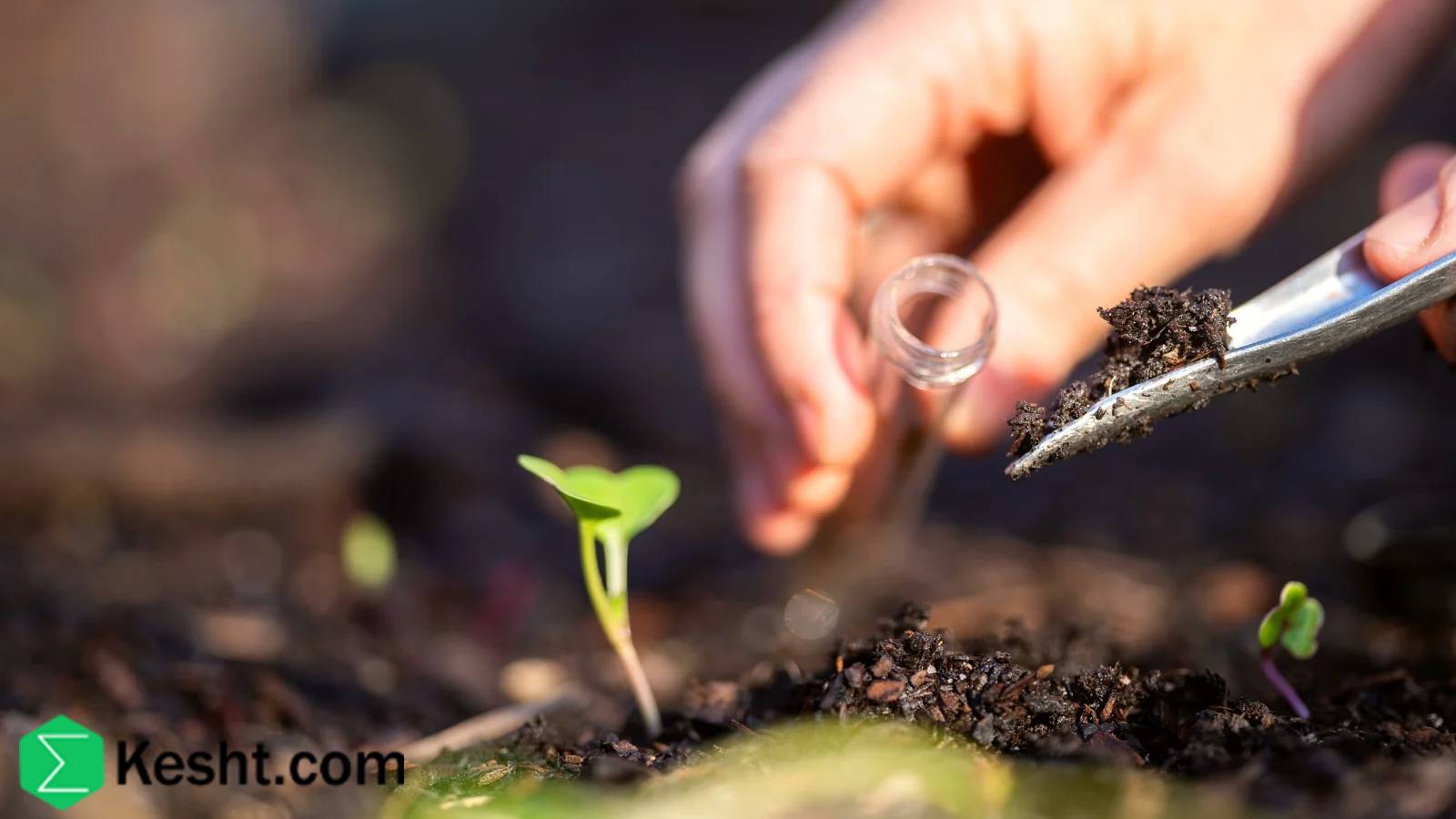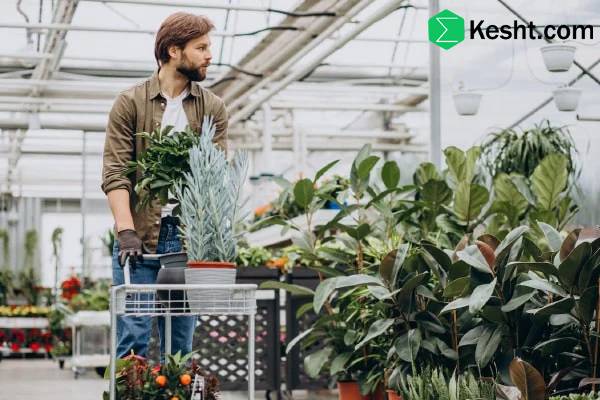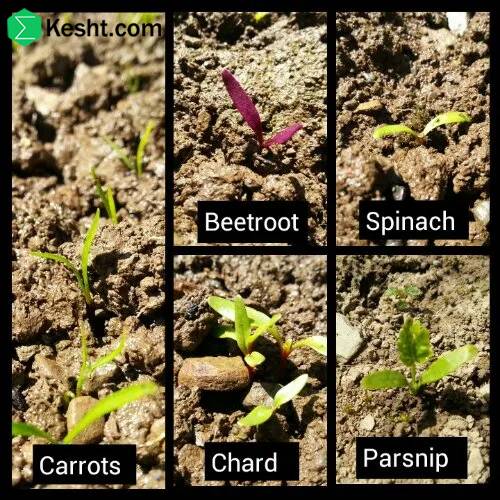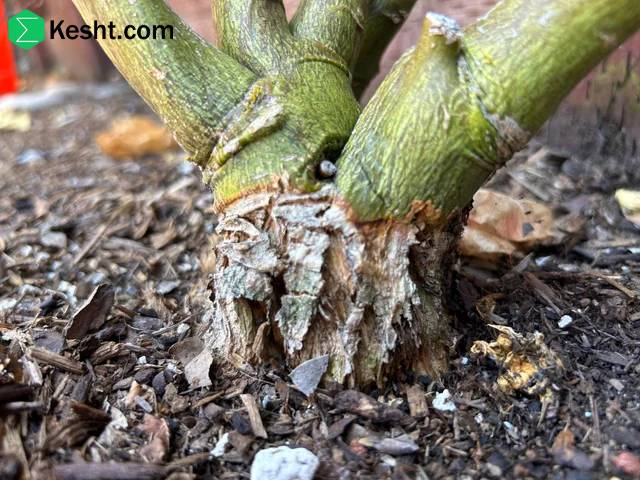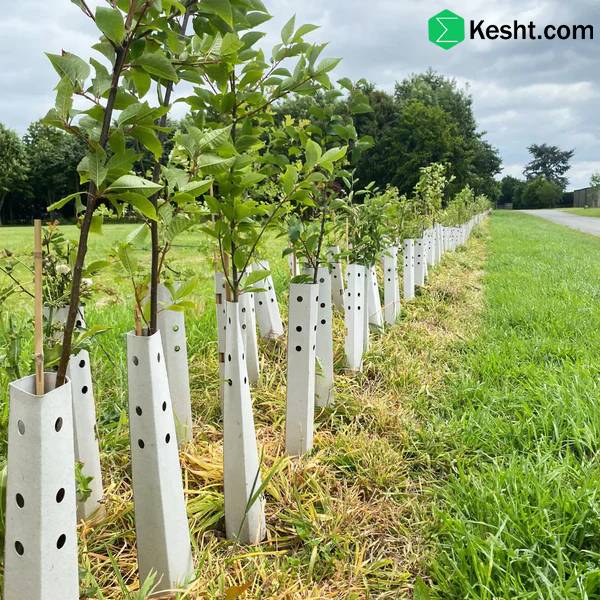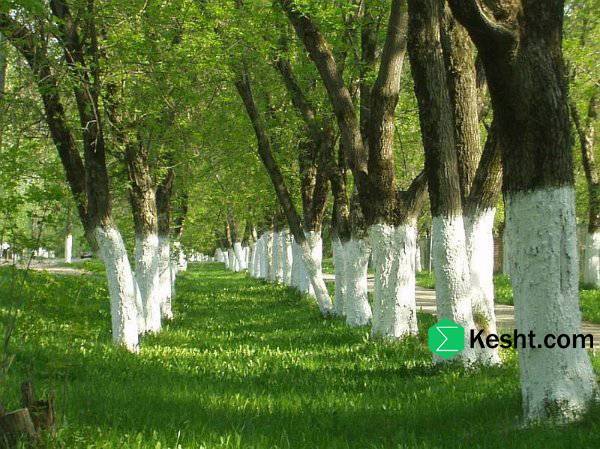Best seasons to plant hybrid pistachio seedlings (e.g., UCB‑1) across regions +
first‑year care essentials
Quick take
- Golden rule: plant while trees are dormant and before intense heat or damaging winds so roots can establish.
- Bare‑root is planted only during dormancy; container/bagged stock is more flexible, but still avoid heat waves.
If you are interested, it is recommended that you read the following article / article title:
When to Spray Almond seedling: A Comprehensive Guide to Pest and Disease Management for seedling
Recommended timing by climate/elevation
| Climate/region (examples) | Bare-root (grafted/rootstock) | Container/bagged | Key notes |
| Cold highlands >1,500 m (e.g., high Khorasan, parts of Qazvin/Kurdistan) | Late Esfand → mid Farvardin (≈ late Mar → mid Apr) | Farvardin → Ordibehesht (≈ Mar → May) | Avoid autumn planting (frost risk). Soil must not be frozen or waterlogged at planting. |
| Temperate semi‑arid 800–1,500 m (Yazd, Semnan, higher Kerman/Khorasan) | Mid Esfand → Farvardin (≈ mid Mar → Apr) | Mehr–Aban (≈ Oct–Nov) or Farvardin–Ordibehesht (≈ Mar–May) | Where autumn is stable and early frosts are rare, Oct–Nov is excellent (roots stay active over winter). |
| Warm–dry central/southern <800–1,000 m (lower Rafsanjan, lower Yazd, warm plains of Kerman) | Esfand → early Farvardin (≈ Mar) | Mehr–Aban (best) or Esfand–Farvardin (≈ Oct–Nov or Mar) | Avoid heat from Khordad (≈ Jun) onward. Autumn planting lets roots reach depth before summer. |
| Very warm with mild winters (Khuzestan, Bushehr, south Fars) | Dey–Bahman–Esfand (≈ Dec–Mar) | Mehr–Azar (≈ Oct–Dec) | Heavy rains = waterlogging risk; secure drainage. Avoid planting close to spring heat waves. |
| Windy, hot–dry (Sistan & Baluchestan; “120‑day winds”) | Esfand (≈ Mar) | Mehr–Aban or Esfand (≈ Oct–Nov or Mar) | Plant before winds start; trunk guards, staking, and temporary/permanent windbreaks are essential. |
By nursery stock type
- Bare‑root: best window is full dormancy until just before bud swell (many Iranian regions: late Bahman → Farvardin). Do not plant after buds swell.
- Container/bagged: more flexible, but:
- Autumn (Mehr–Aban) is ideal in non‑cold regions (roots establish over winter).
- Spring (Farvardin–Ordibehesht) is safer than summer everywhere.
- Summer only if unavoidable, with 30–50% shade cloth, precise irrigation, and outside of heat waves.
Simple go/no‑go thresholds
- Soil temperature at 20 cm depth ≥ 8–10°C: good for root activity.
- 10‑day forecast: no severe frosts (min < −3°C) and no early heat waves (max > 35°C) during the first weeks.
- Workable soil: neither waterlogged nor frozen.
Poor timing
- Just before a frost event or prolonged heavy rain (crown rot risk).
- From Khordad to Shahrivar (≈ Jun–Sep) in most regions due to heat—unless using containers with shade and very precise irrigation.
- During strong wind seasons (e.g., Sistan’s 120‑day winds) or dust storms.
Extra tips for successful planting
- Autumn planting: whitewash trunks, install guards, and apply a light mulch (not touching the trunk) to pass winter safely.
- Spring planting: slow, deep establishment irrigation, then small, frequent sets.
- Saline water sites: autumn planting benefits from winter rains that leach surface salts.
If you are interested, it is recommended that you read the following article / article title:
How to Choose the Best Almond Sapling? A Complete Guide to Buying Almond Saplings
Care and maintenance of hybrid pistachio seedlings (e.g., UCB‑1): what to do
At a glance
- First 12 months: drive deep roots, protect the trunk from sun/wind, keep growth even and stress‑free; fruiting is not a goal.
- Hybrid nuance: early vigor is stronger—use firmer staking, steadier irrigation, and milder nitrogen to avoid overly lush, tender growth.
1) Before planting
- Test water/soil (EC, SAR, boron/chloride; depth and drainage). Amend sodic soils with gypsum, add well‑matured organic matter, and ensure drainage.
- In heavy/rainy soils plant on low ridges; avoid soggy spots.
- Choose deep containers without root circling; the graft union must remain 15–25 cm above final soil level.
2) Planting day and first 6–8 weeks
- Establishment irrigation: one slow, deep set to wet 30–40 cm; then a regular schedule with smaller, more frequent sets.
- Stake + figure‑8 ties; whitewash trunk (acrylic 1:1 with water); trunk guard. In hot areas, use 30–50% shade for 4–8 weeks.
- Correct any circling roots at pot removal (tease/cut light rings).
3) Smart irrigation
- Principle: more frequent, smaller sets; keep the root zone slightly moist, never saturated.
- Typical drip pattern (2 emitters × 4 L/h): spring 2–3 sets/week × 45–60 min; summer 4–5 sets/week × 60–90 min; autumn 1–3 sets/week. Adjust ±20–30% for soil/temperature.
- Saline/high‑bicarbonate water: every 3–4 weeks run a deeper leach (if drainage allows). Keep emitters a bit away from the trunk to keep the collar dry.
4) Balanced nutrition
- Year one: ~30–60 g N per tree (≈ 65–130 g urea) in 3–6 splits from mid‑spring to mid‑summer.
- Potassium: 40–80 g potassium sulfate in 2–3 splits; avoid KCl in year one.
- Micronutrients: in calcareous soils, soil‑applied Fe‑EDDHA near emitters; Zn/B only by leaf test, and don’t overapply boron.
- Organics/mulch: a 5–7 cm ring (not touching the trunk) to conserve moisture and improve soil biology.
5) Physical protection
- Renew whitewash mid‑summer; deploy temporary shade during heat waves.
- Keep the stake in place through year one; hybrids’ fast growth needs robust staking.
- Windbreaks in windy blocks; set shade height/orientation to the sun path.
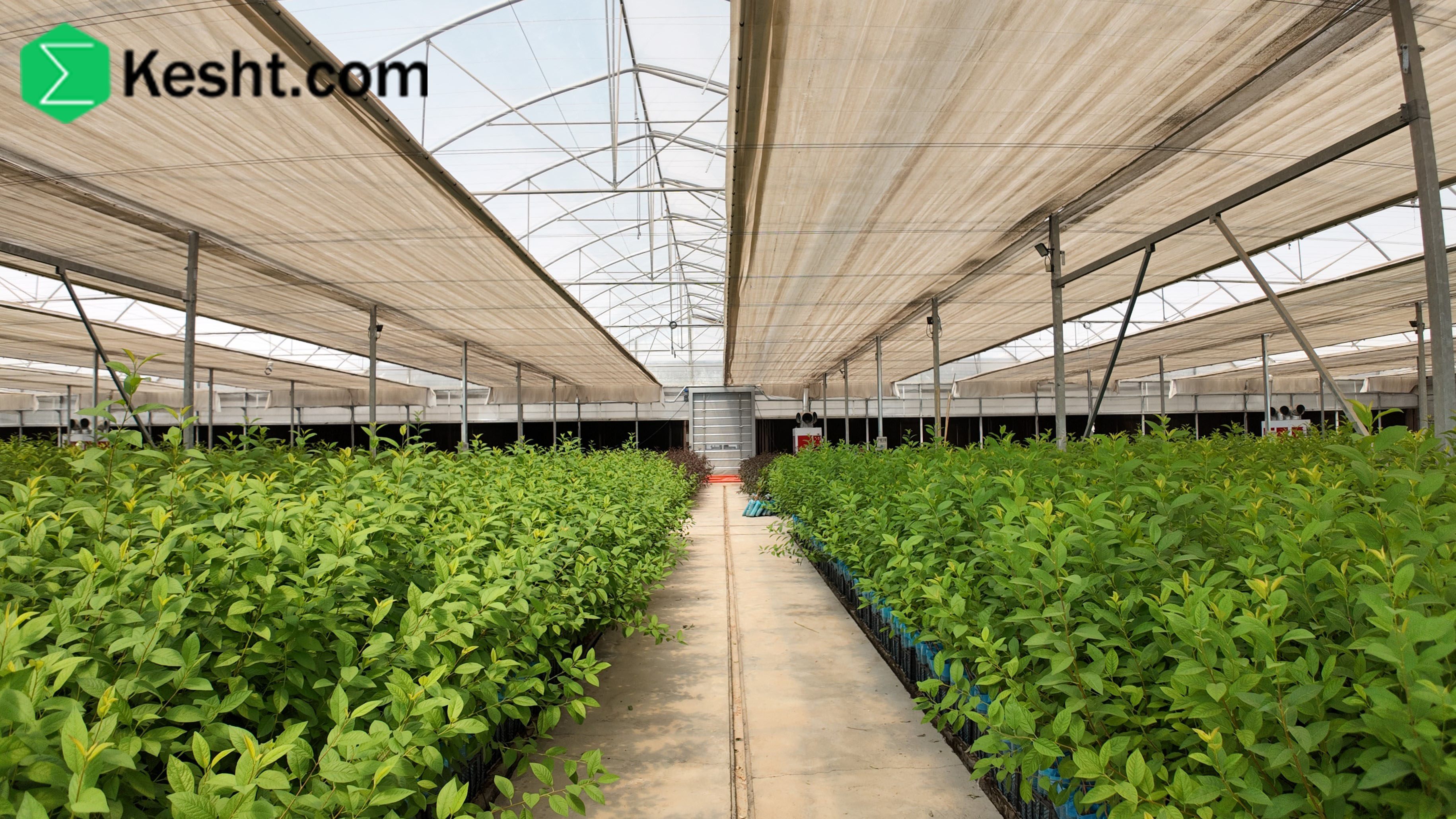
6) Pruning and training
- Year one: build one straight, strong leader; gradually remove very low laterals but keep enough foliage on the trunk to thicken it.
- Do the structural heading cut in winter at ~100–120 cm to form 3–4 main scaffolds in year two.
- Remove any fruitlets in year one so energy goes to roots/trunk.
7) Weeds and floor management
- Maintain a 1–1.5 m weed‑free circle around each sapling; mulch helps.
- Weed mechanically with care; avoid collar/root injury. If using herbicides, trunk guards and labeled doses are mandatory.
8) Hygiene, pests, and diseases (IPM)
- Top threat in year one: waterlogging and Phytophthora. Keep the collar dry; use light, even irrigations.
- Weekly scouting: psyllids, mites, scales, ants; act at thresholds and rotate approved actives.
- Disinfect pruning tools; remove infected debris. Limit soil movement from old/infested blocks (Verticillium risk).
9) Salinity/sodicity management
- Year‑one goal: keep root‑zone EC low (seedlings tolerate less than mature trees).
- Combine planned leaching + gypsum for sodic soils + mild acidification for high‑bicarbonate water (with proper safety and expert guidance).
- Ensure drainage and measure leachate EC monthly for early warnings.
10) Monitoring and records
- Weekly: soil moisture (probe/tensiometer), signs of chlorosis/burn, collar/stake/guard condition.
- Monthly: height/diameter growth, weed status, pests/diseases, adjust irrigation/fertility.
- Mid‑summer: leaf analysis to fine‑tune nutrition.
If you are interested, it is recommended that you read the following article / article title:
The Best Time to Plant Almond seedling
https://ekesht.com/en/blog/the-best-time-to-plant-almond-seedling
Hybrid‑specific notes
- Rooting: clonal plants often have stronger laterals—deep containers and circling‑root correction are critical.
- Strong vigor: keep N mild and split to avoid overly lush, stress‑sensitive growth.
- Disease tolerance: better Verticillium tolerance ≠ immunity; waterlogging can still trigger Phytophthora and dieback.
Don’ts
- Burying the graft union or letting mulch/fresh manure touch the trunk
- Heavy, infrequent irrigations (boom‑bust wetting)
- Chloride fertilizers or high N rates in year one
- Keeping the collar constantly wet
- Neglecting whitewash/shade in summer and staking in windy areas
If you are interested, it is recommended that you read the following article / article title:
A comprehensive guide to planting and maintaining almond seedlings
https://ekesht.com/en/blog/Comprehensive-guide-to-planting-and-caring-for-almond-seedling
We are the “ekesht” platform — a subsidiary of Samin Atlas Iranians and the only official exporter of BlueLabel seedlings in Iran
Why Blue Label?
Because the world only trusts these seedlings!
Ordinary seedlings (without labels or other labels), even if one of them is infected, can destroy your entire garden — without you realizing it!
But the advantage of Blue Label seedlings:
✅Each of them has a global barcode
✅Tested in advanced laboratories
✅Free from any viruses and microbes
✅The only seedlings that are allowed to be legally exported!
This is important for you if:
- You want to build a garden that is productive and hassle-free
- You are looking for a long-term investment in gardening
- You want to start without stress, without losses, without surprises!
Blue Label seedlings = peace of mind
Because when the seedlings are healthy, the garden stays healthy — and real profits come!
Contact us now — before a random seedling destroys your garden!
Healthy Seedlings = Fruitful Garden = Smart Investment
And that’s exactly what we do at ekesht.
ekesht platform (with fifteen years of practical and successful trade experience with Russia, Kazakhstan, Iraq, China, Turkmenistan, Turkey, etc.) is ready to cooperate with people active in the field of agriculture.
For more information and additional information, please contact us via social media, phone call or email
Phone number:
Email:
Social media address:
